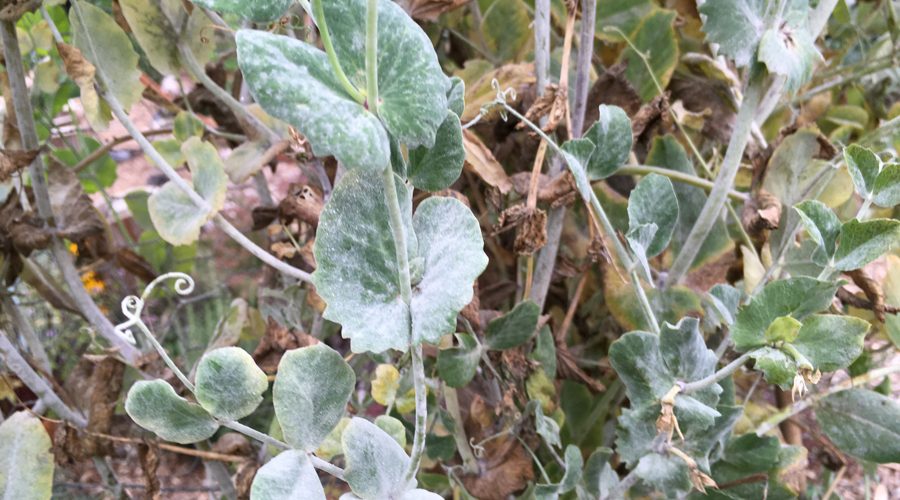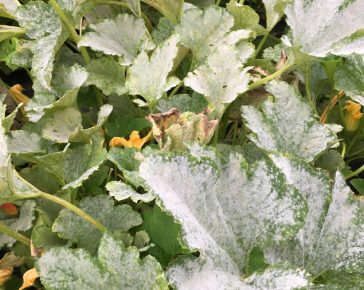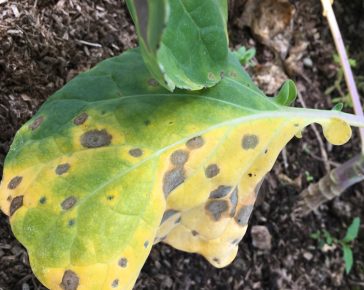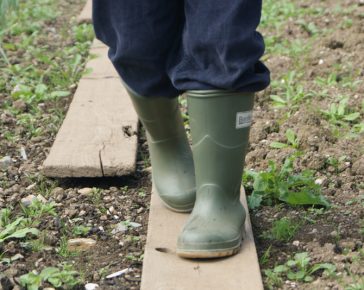Late summer brings mildew to pea plants of all types, sugarsnap, garden and mangetout. You’ll recognise it from the white coating on the leaves, which will rapidly spread across the whole crop. It’s not usually a problem until around this time of year, tying in with a subtle temperature change as autumn draws nearer. Once it has affected plants, you’ll notice that the peas themselves start to lose their lovely sweet flavour, and it probably won’t be long before you’ll need to pull up the plants (don’t worry, you can plant new things in their place in just a few weeks time!)
Can you treat it?
In all honesty, there’s not much you can do at this time of year, as the likelihood is that the plants will be affected and will die back naturally. However you can try and stall things if you catch it early – water them well and keep them well watered to avoid stress, pinch out infected shoots and you can also try a milk/water spray (mix 1 part milk to 3 parts water in a spray bottle and apply to foliage on a sunny afternoon)
How to prevent it in future
If you’re in a location that is prone to mildew, it can be really beneficial to mulch peas in the future when you plant them in spring. This will help them to keep stress-free in a consistently moist soil making it less likely that they will be affected by mildew. It will also help to nourish the soil, which in turn will keep the plants healthier and better able to resist mildew.




